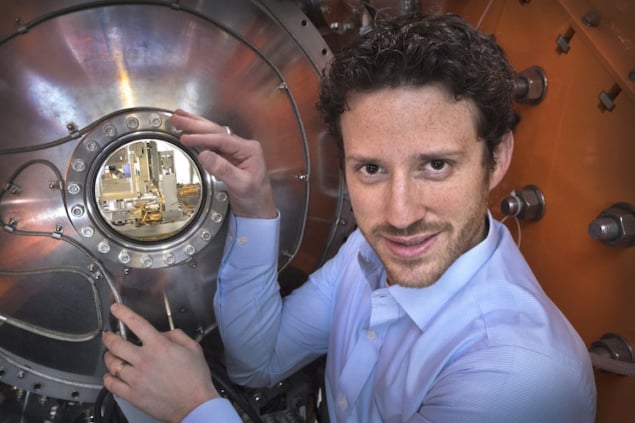
Most metals expand when heated and contract when cooled. A few metals, however, do the opposite, exhibiting what’s known as negative thermal expansion (NTE). A team of researchers led by Ignace Jarrige and Daniel Mazzone of Brookhaven National Laboratory in the US has now found that in one such metal, yttrium-doped samarium sulphide (SmS), NTE is linked to a quantum many-body phenomenon called the Kondo effect. The work could make it possible to develop alloys in which positive and negative expansion cancel each other out, producing a composite material with a net-zero thermal expansion – a highly desirable trait for applications in aerospace and other areas of hi-tech manufacturing.
Even within the family of NTE materials, yttrium-doped SmS is an outlier, gradually expanding by up to 3% when cooled over a few hundred degrees. To better understand the mechanisms behind this “giant” NTE behaviour, Mazzone and Jarrige employed X-ray diffraction and spectroscopy to investigate the material’s electronic properties.
The researchers carried out the first experiments at the Pair Distribution Function (PDF) beamline at Brookhaven’s National Synchrotron Light Source (II) (NSLS-II). They placed their SmS sample inside a liquid-helium cooled cryostat in the beam of the synchrotron X-rays and measured how the X-rays scattered off the electron clouds around the atomic ions. By tracking how these X-rays scatter, they identified the locations of the atoms in the crystal structure and the spacings between them.
“Our results show that, as the temperature drops, the atoms of this material move farther apart, causing the entire material to expand by up to 3% in volume,” says Milinda Abeykoon, the lead scientist on the PDF beamline.
The second set of experiments took place at the SOLEIL synchrotron in France and the SPring-8 synchrotron in Japan. These measurements used X-ray absorption spectroscopy to track whether electrons move into or out of the outermost (valence) shell of the Sm atoms, which is just under half full, Jarrige explains. The researchers found that the electrons flowing through the SmS metal were indeed travelling into the valence shell, causing the entire material to expand as each atom’s electron cloud grew to accommodate additional incoming electrons.
Sm atoms act as tiny magnetic impurities
According to the researchers, this behaviour is explained by the Kondo effect, which describes how conduction electrons interact with magnetic impurities in a material. During such interactions, electrons align their spins in a way that opposes the spin of the larger magnetic particle, effectively “screening out” or cancelling its magnetism.
In SmS, the just-under-half-full valence shell of each Sm atom acts as a tiny magnetic impurity that points in a certain direction, explains Maxim Dzero, a theoretical physicist at Kent State University, who collaborated with Jarrige and Mazzone. Since SmS is a metal, it also contains mobile conducting electrons that can approach and cancel out the magnetic moment of the impurity. The electrons can then move into the valence shell, filling it up and leading to the material’s expansion.
Exploring other rare-earth based materials
Dzero’s calculations suggest that the amplitude of this NTE can be tuned by varying the amount of yttrium doping, although Mazzone notes that this hypothesis needs to be tested further. The researchers also predict that two other rare-earth metals, thulium and ytterbium, should exhibit Kondo effect-driven NTE, and Mazzone says it would be interesting to see whether the magnitude of the expansion is as large as in Sm. In the other rare-earth metals studied so far, the degree of negative thermal expansion is subtle at best, he adds.

Quantum oscillations appear in a Kondo insulator
The present research, which is detailed in Physical Review Letters, could be important for developing composite materials that have near-zero thermal expansion. Such materials would contain alloys that expand on one side and shrink on the other as they cool, keeping the overall size the same. Materials of this type could be used to make the metal parts in aeroplane wings, which routinely contain composites or alloys with opposite expansion properties to prevent dangerous shrinkage in the low temperatures found at high altitudes. Other applications include temperature-stable contacts in microelectronics devices undergoing thermal cycling and substrate materials for mirrors in telescopes and satellites.
The NTE coefficient that the Brookhaven and other groups have reported for yttrium-doped SmS is large enough to meet even the most demanding technology applications, but Jarrige admits that the high costs of Sm could limit its deployment.
“This is why it will be important to explore other rare-earth based materials to better understand how the Kondo effect can trigger dramatic macroscopic changes in materials,” he tells Physics World. “These studies could help us find a cheaper alternative to Y-doped SmS.”



